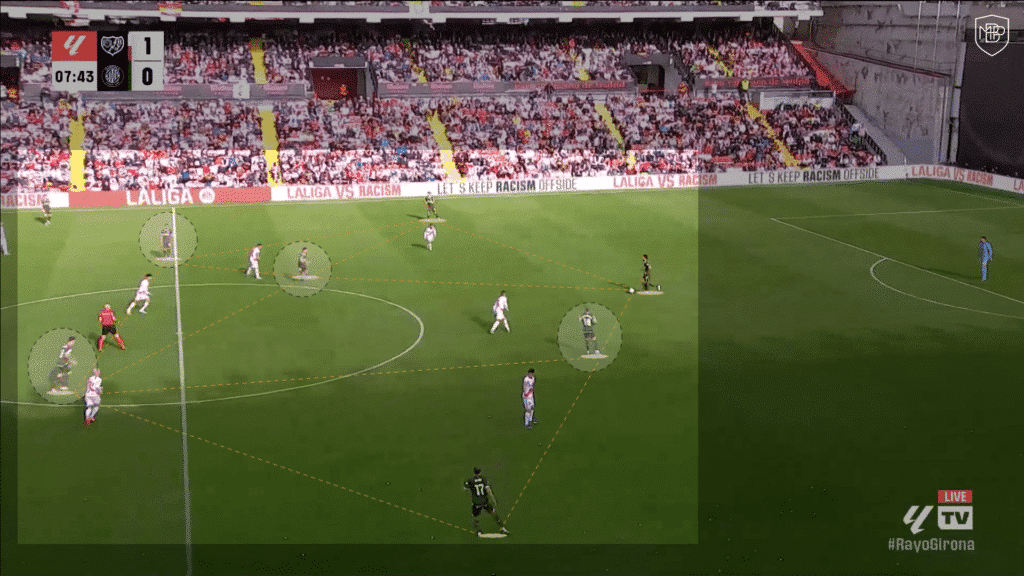More and more teams are adding an extra player to their midfield, with the main objective of trying to dominate the ball and, consequently, to control the tempo of the game.
However, the understanding of the different players in the midfield in terms of occupying space and performing different behaviours is not an easy task and requires a great deal of coordination in order to obtain the expected result.
Therefore, this week at the MBP School of Coaches, we will explain two collective line fundamentals that will facilitate the understanding of the midfield players.
Fundamental: Establishing diagonal positions to the other lines
The first point to note relates to positioning. The midfielders must be positioned diagonally to the line in front and behind them, and at different heights to teammates on the same line.
The tactical intention of this positioning is to provide diagonal passing lines to the on-ball teammate, which are more difficult to defend, and to open up passing lines in progression to the second line – in this case, to the forward line.
Furthermore, it should be noted that positioning in triangle and diamond formations is much more difficult for the opponent to defend.
Fundamental: Offering different supports than the players from the same line
The second fundamental that we want to highlight refers to the behaviour of the players.
The midfielders must offer different types of support with the main objective of widening the range of possibilities for the on-ball teammate. These can be progression, continuity, security, opening up space, among others.
Another aspect to be considered is the distances and trajectories that the midfielders must offer in relation to the possessor. This support can be short or long.
Finally, depending on the number of midfielders in the midfield, different combinations of support can be offered. The main objective is always to offer a minimum of 2 different passing options, the optimum being 3.
For example, one player offers short progression, another long progression and a final player offers short continuity.
Conclusion
In conclusion, in order to optimise the performance of the players in a line, there must be tactical work through the collective line fundamentals.
Likewise, another vital aspect to obtain a better performance from players is the concept of assertive-motor communication. This notion is related to the idea of ‘constellations’. We consider constellations to be those players who, when in close proximity (intervention zone), increase their performance exponentially. This performance increases as a result of the interactions that take place on an assertive-motor level between the players who form the constellation.
Therefore, the constellations will shine when the players that form them are in positions that allow them to interact and, as a consequence, to be in the intervention zone simultaneously.









please I would like to understand better the difference in the options given as support in the midfield.
that is: Short pregessive pass, long progressive and short continuity.